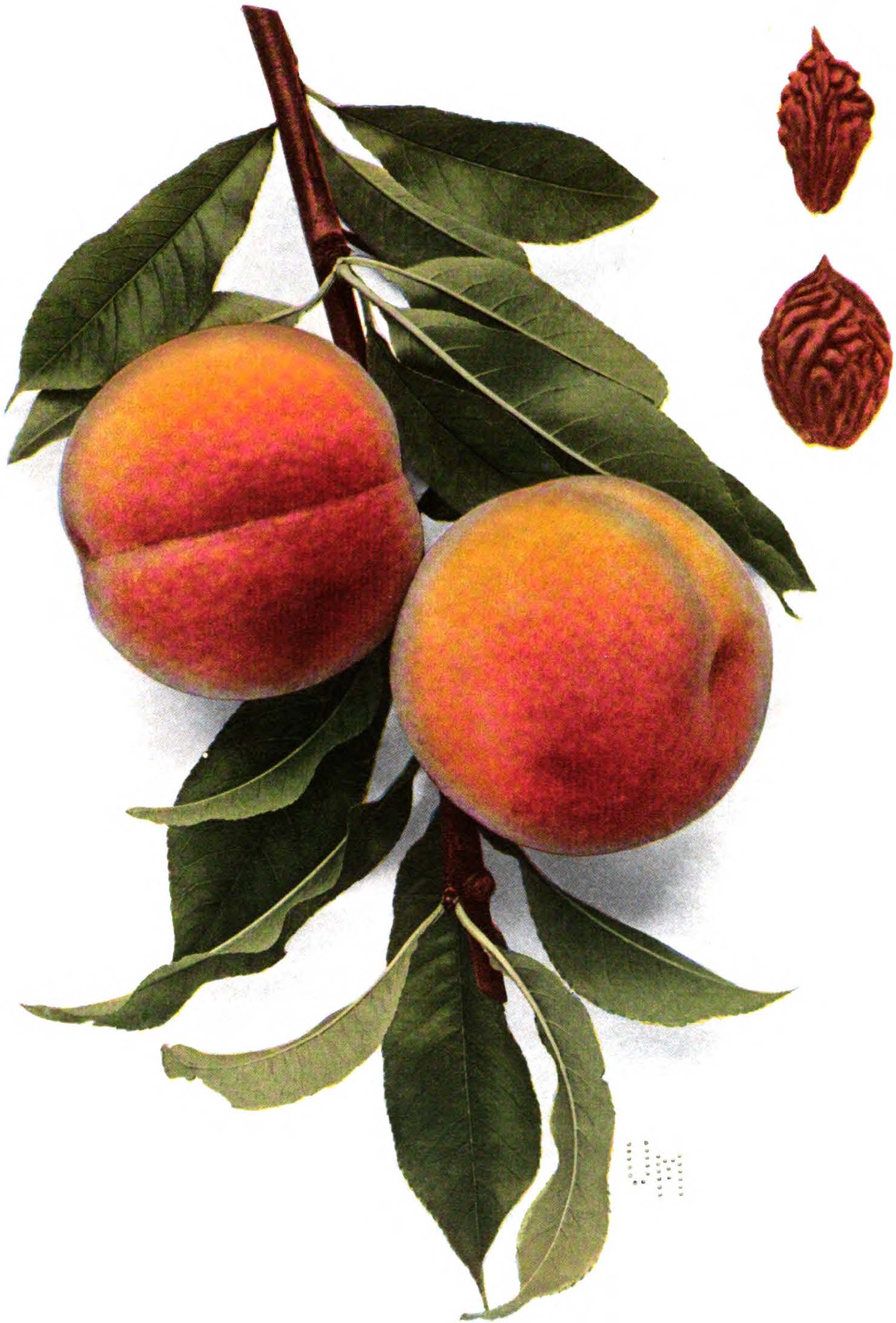Here is the description of Champion from “The Peaches of New York” (1917), pages 195-197
Champion is the white-fleshed peach par excellence in quality — rightly used as the standard to gauge the quality of all other white-fleshed peaches. The fruits are nearly as attractive to the eye as to the palate but unfortunately run small and off color in all but choicely good peach-soils. The peaches are not only very good in the characters that make up quality — tender flesh, juiciness, pleasant flavor — but there is a peculiar honeyed sweetness possessed by few other peaches which gives the Champion individuality. The color, barring a slight excess in yellow, is well shown in the color-plate but the size as shown is small. The tree of Champion is almost perfect from the ground up, few other varieties surpassing it in height and girt and none, on the Station grounds at least, equalling it in the quantity and the luxuriant green of its foliage. A Champion tree is known by its foliage as far as the eye can distinguish color. As would be expected from the tree-characters given, in soils to which it is suited, Champion rejoices in vigor and health as do few other varieties. The variety surpasses most of its orchard-associates in productiveness but the peaches are inviting prey to brown-rot and the trees are sometimes defoliated with leaf-curl so that, with its capriciousness as to soils, it has grave faults as a commercial variety. Because of high quality of the fruit and the beauty of the tree, Champion should have a conspicuous place in the orchard of the amateur.
Champion is a seedling of Oldmixon Free supposedly fertilized by Early York. The original seed was planted about 1880 by I. G. Hubbard, Nokomis, Illinois, and the variety was introduced by him and by the Dayton Star Nurseries in 1890. In the early years of its dissemination Champion was confused with an early, semi-cling variety which originated in western Michigan and which was locally sold for a time under the same name. The American Pomological Society added Champion to its fruit-list in 1897.
Tree large, vigorous, spreading, open-topped, very productive; trunk thick; branches stocky, smooth, reddish-brown covered with ash-gray; branchlets thick, very long, with short internodes, olive-green overspread with dull red, smooth, glabrous, with numerous large lenticels, inconspicuous except toward the base.
Leaves five and one-fourth inches long, one and one-half inches wide, folded upward, oval to obovate-lanceolate; upper surface dark green, rugose along the midrib; lower surface grayish-green; margin finely serrate, tipped with dark red glands; petiole three-eighths inch long, with two to five small, globose, greenish-yellow glands variable in position.
Flower-buds large, medium in length, plimip, conical, pubescent, free; blossoms appear in mid-season; flowers pink, less than one inch across, well distributed; pedicels short, glabrous, pale green; calyx-tube dark, mottled reddish-green, greenish-yellow within, obconic, glabrous; calyx-lobes short, broad, obtuse, glabrous within, pubescent without, slightly reflexed ; petals round-oval to ovate, tapering to narrow, short, white claws; filaments three-eighths inch long, equal to the petals in length; pistil pubescent about the ovary, equal to the stamens in length.
Fruit matures in early mid-season; two and one-fourth inches long, two and three eighths inches wide, round or round-oval, somewhat truncate, with halves usually equal; cavity shallow, narrow, abrupt or flaring, contracted; suture shallow; apex roundish, usually with a slightly recurved, mucronate tip; color pale green changing to creamy-white, with splashes of carmine mingled with a blush of darker red; pubescence short, thick; skin tough, adherent to the pulp; flesh white, tinged red at the pit, very juicy, markedly tender, sweet, pleasant flavored; very good; stone semi-free to free, one and one-half inches long, about one inch wide, oval, long-pointed, with deeply grooved surfaces; ventral suture furrowed deeply along the sides, wide; dorsal suture deeply furrowed, rather wide, with sides slightly wing-like.
